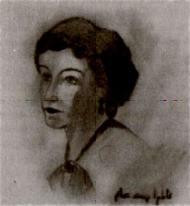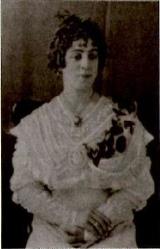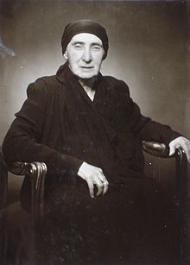Hvem giftede sig med Abdul Hamid II?
Sazkar Hanım gift Abdul Hamid II . Aldersforskellen var 30 år, 7 måneder og 17 dage.
Saliha Naciye Kadın gift Abdul Hamid II .
Bedrifelek Kadın gift Abdul Hamid II . Aldersforskellen var 8 år, 3 måneder og 14 dage.
Mezidemestan Kadın gift Abdul Hamid II . Aldersforskellen var 26 år, 5 måneder og 10 dage.
Bidar Kadın gift Abdul Hamid II . Aldersforskellen var 12 år, 7 måneder og 14 dage.
Behice Hanım gift Abdul Hamid II . Aldersforskellen var 40 år, 0 måneder og 19 dage.
Nurefsun Kadın gift Abdul Hamid II .
Fatma Pesend Hanım gift Abdul Hamid II . Aldersforskellen var 33 år, 6 måneder og 27 dage.
Emsalinur Kadın gift Abdul Hamid II . Aldersforskellen var 23 år, 3 måneder og 12 dage.
Azize Dilpesend Kadın gift Abdul Hamid II . Aldersforskellen var 18 år, 3 måneder og 26 dage.
Peyveste Hanım gift Abdul Hamid II . Aldersforskellen var 30 år, 7 måneder og 19 dage.
Müşfika Kadın gift Abdul Hamid II . Aldersforskellen var 25 år, 2 måneder og 19 dage.
Mediha Nazikeda Kadın gift Abdul Hamid II .
Abdul Hamid II

Abdülhamid II or Abdul Hamid II (Ottoman Turkish: عبد الحميد ثانی, romanized: Abd ul-Hamid-i s̱ānī; Turkish: II. Abdülhamid; 21 September 1842 – 10 February 1918) was the 34th sultan of the Ottoman Empire, from 1876 to 1909, and the last sultan to exert effective control over the fracturing state. He oversaw a period of decline with rebellions (particularly in the Balkans), and presided over an unsuccessful war with the Russian Empire (1877–78), the loss of Egypt, Cyprus, Bulgaria, Serbia, Montenegro, Tunisia, and Thessaly from Ottoman control (1877–1882), followed by a successful war against Greece in 1897, though Ottoman gains were tempered by subsequent Western European intervention.
Elevated to power in the wake of Young Ottoman coups, he promulgated the Ottoman Empire's first constitution, a sign of the progressive thinking that marked his early rule. But his enthronement came in the context of the Great Eastern Crisis, which began with the Empire's default on its loans, uprisings by Christian Balkan minorities, and a war with the Russian Empire. At the end of the crisis, Ottoman rule in the Balkans and its international prestige were severely diminished, and the Empire lost its economic sovereignty as its finances came under the control of the Great Powers through the Ottoman Public Debt Administration.
In 1878, Abdul Hamid consolidated his rule by suspending both the constitution and the parliament, purging the Young Ottomans, and curtailing the power of the Sublime Porte. He ruled as an autocrat for three decades. Ideologically an Islamist, the sultan asserted his title of Caliph to Muslims around the world. His paranoia about being overthrown, like his uncle and half-brother, led to the creation of secret police organizations and a censorship regime. The Ottoman Empire's modernization and centralization continued during his reign, including reform of the bureaucracy, extension of the Rumelia Railway and the Anatolia Railway, and construction of the Baghdad Railway and the Hejaz Railway. Systems for population registration, sedentarization of tribal groups, and control over the press were part of a unique imperialist system in fringe provinces known as borrowed colonialism. The farthest-reaching reforms were in education, with many professional schools established in fields such as law, arts, trades, civil engineering, veterinary medicine, customs, farming, and linguistics, along with the first local modern law school in 1898. A network of primary, secondary, and military schools extended throughout the Empire. German firms played a major role in developing the Empire's railway and telegraph systems.
Ironically, the same education institutions that the Sultan sponsored proved to be his downfall. Large sections of the pro-constitutionalist Ottoman intelligentsia sharply criticized and opposed him for his repressive policies, which coalesced into the Young Turks movement. Ethnic minorities started organizing their own national liberation movements, resulting in insurgencies in Macedonia and Eastern Anatolia. Armenians especially suffered from massacres and pogroms at the hands of the Hamidiye regiments. Of the many assassination attempts during Abdul Hamid's reign, one of the most famous is the Armenian Revolutionary Federation's Yıldız assassination attempt of 1905. In 1908, the Committee of Union and Progress forced him to recall parliament and reinstate the constitution in the Young Turk Revolution. Abdul Hamid II attempted to reassert his absolutism a year later, resulting in his deposition by pro-constitutionalist forces in the 31 March incident, though the role he played in these events is disputed.
Abdul Hamid has been long vilified as a reactionary "Red Sultan" for his tyrannical leadership and condoning of atrocities. It was initial consensus that his personal rule accelerated disintegration of the Ottoman Empire, holding back modernization during the otherwise dynamic Belle Époque. Recent assessments have highlighted his promotion of education and public works projects, his reign a culmination and advancement of the Tanzimat reforms. Since the AKP's rise to power, scholars have attributed a resurgence in his personality cult an attempt to check Mustafa Kemal Atatürk's established image as the founder of modern Turkey.
Læs mere...
Sazkar Hanım

Abdul Hamid II


Saliha Naciye Kadın

Abdul Hamid II


Bedrifelek Kadın

Abdul Hamid II


Mezidemestan Kadın
Mezidemestan Kadın (Ottoman Turkish: مزیدمستان قادین, "merry woman", also Mezide Kadın; born Kadriye Kamile Merve Mikanba; 3 March 1869 – 21 January 1909) was the sixth consort of Sultan Abdul Hamid II of the Ottoman Empire.
Læs mere...Abdul Hamid II


Bidar Kadın

Abdul Hamid II


Behice Hanım

Abdul Hamid II


Nurefsun Kadın
Abdul Hamid II


Fatma Pesend Hanım

Abdul Hamid II


Emsalinur Kadın

Emsalinur Kadın (Ottoman Turkish: امثال نور قادین; "exemplary light"; 2 January 1866 – c. 1952; after the Surname Law of 1934: Emsalinur Kaya) was the seventh consort of Sultan Abdul Hamid II of the Ottoman Empire.
Læs mere...Abdul Hamid II


Azize Dilpesend Kadın
Abdul Hamid II


Peyveste Hanım

Abdul Hamid II


Müşfika Kadın

Destizer Müşfika Kadın (Turkish pronunciation: [myʃfikʰa kʰadɯn]; Ottoman Turkish: مشفقه قادين; meaning "the compassionate one"; born Ayşe Ağır; c. 1872 – 18 July 1961; after the Surname Law of 1934: Müşfika Kayısoy) was the eighth consort of Sultan Abdul Hamid II of the Ottoman Empire.
Læs mere...Abdul Hamid II

